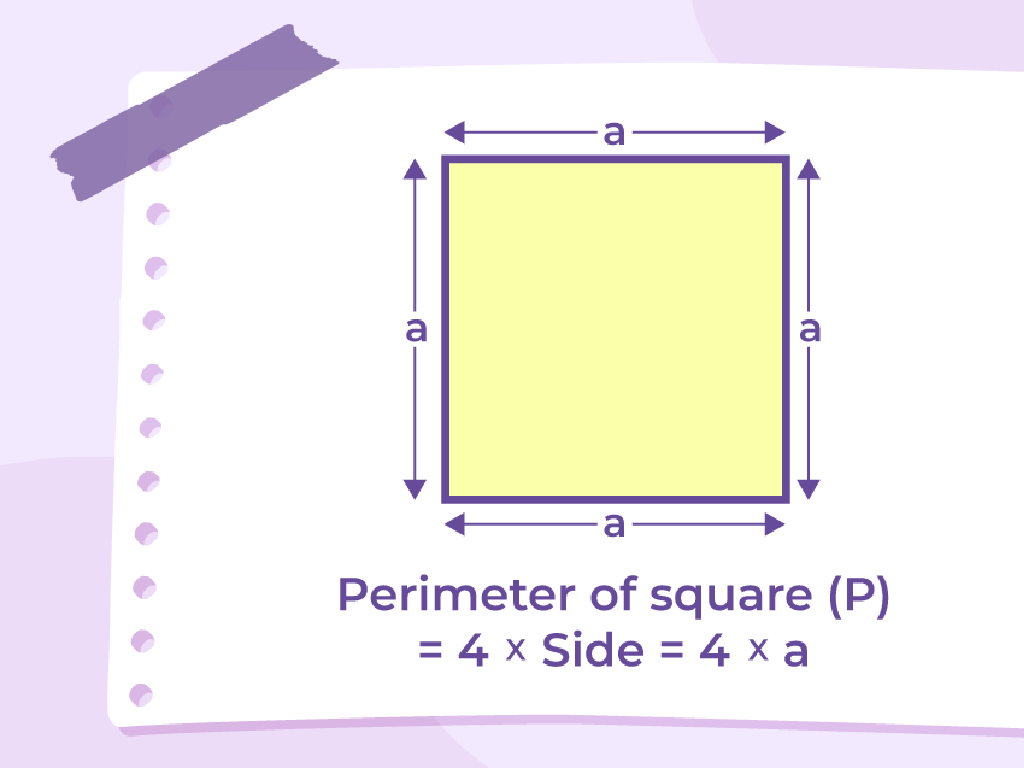The Cellular Basis Of Life
Subject: Science
Grade: High school
Topic: Biology
Please LOG IN to download the presentation. Access is available to registered users only.
View More Content
Introduction to Cellular Biology
– Cells: Building blocks of life
– Cells are the smallest unit of life, forming the basis of all living things.
– Defining the cell
– A cell is the basic structural, functional, and biological unit of all known living organisms.
– Cells’ role in organisms
– Cells provide structure for the body, take in nutrients, convert those nutrients into energy, and carry out specialized functions.
– Exploring cell functions
– Cells also have the ability to reproduce and pass genetic information to new cells.
|
This slide introduces the fundamental concept of cellular biology, emphasizing the significance of cells as the basic building blocks of life. It’s crucial to convey that every living organism is made up of cells, which vary in complexity from single-celled bacteria to multicellular humans. Highlight the cell’s role as the structural and functional unit of life, responsible for carrying out life processes, maintaining homeostasis, and enabling growth and reproduction. Encourage students to think about the diversity of cell types and their specialized functions, setting the stage for a deeper exploration of cellular structures and processes in subsequent lessons.
Exploring the Foundations of Cell Theory
– Three core principles of cell theory
– All living things are made of cells, cells are the basic units of life, and all cells come from pre-existing cells.
– Pioneering scientists’ contributions
– Schwann & Schleiden proposed cell theory, Virchow added that all cells arise from pre-existing cells.
– Cell theory’s role in biology
– Cell theory is crucial for understanding the structure and function of all living organisms.
– Understanding modern biology
|
This slide introduces the cell theory, which is a fundamental concept in biology. The three core principles are that all living organisms are composed of one or more cells, the cell is the basic unit of life, and all cells arise from existing cells. Highlight the contributions of Theodor Schwann, Matthias Schleiden, and Rudolf Virchow, who were instrumental in the development of this theory. Emphasize how cell theory provides the framework for understanding the continuity of life and the functioning of all biological processes. It’s the cornerstone that connects all areas of biology, from molecular biology to ecology. Encourage students to consider how advancements in cell theory have paved the way for modern biological research and medical breakthroughs.
Exploring Cell Types: Prokaryotic & Eukaryotic
– Contrast: Prokaryotic vs. Eukaryotic
– Prokaryotic cells lack a nucleus, while eukaryotic cells have a defined nucleus.
– Unique cell characteristics
– Prokaryotic: simple structure, no organelles; Eukaryotic: complex, organelles present.
– Organism examples per cell type
– Prokaryotic: bacteria; Eukaryotic: plants, animals, fungi.
– Significance in biology
|
This slide aims to introduce students to the fundamental differences between prokaryotic and eukaryotic cells, which are the two primary categories of cells in biology. Prokaryotic cells are simpler, smaller, and lack a nucleus and membrane-bound organelles, typically found in bacteria and archaea. Eukaryotic cells, on the other hand, are more complex with a nucleus and organelles, found in organisms like plants, animals, and fungi. Understanding these differences is crucial for students as it lays the foundation for comprehending the complexity of life and the evolutionary relationships between different organisms. Encourage students to think about the implications of these differences on the cellular functions and the overall organism’s complexity.
Cell Structure and Function: A Closer Look
– Organelles within a cell
– Tiny structures that perform specific functions, like organs in a body.
– Functions of nucleus, mitochondria, ribosomes
– Nucleus: controls cell activities; Mitochondria: energy production; Ribosomes: protein synthesis.
– Cell membrane: The gatekeeper
– Semi-permeable, controls entry and exit of substances.
– Cell wall: Structure and protection
– Found in plant cells, provides rigidity and support.
|
This slide aims to introduce students to the complex world of cell structure and function. Begin by explaining that organelles are to cells what organs are to the body, each with a unique role. Highlight the nucleus as the control center, the mitochondria as the powerhouse, and ribosomes as the protein factories. Discuss the selective permeability of the cell membrane and its importance in maintaining homeostasis. Contrast this with the cell wall’s role in providing structure and protection, particularly in plant cells. Use diagrams to illustrate these concepts and encourage students to think of the cell as a miniature city, with each organelle performing a vital function to keep the city running.
Cellular Processes: The Foundation of Life
– Photosynthesis vs. Cellular Respiration
– Photosynthesis converts solar energy into chemical energy, while respiration uses it to power activities.
– Mitosis vs. Meiosis: Purposes
– Mitosis leads to growth and repair, meiosis to genetic diversity in offspring.
– DNA Replication: Basis of Inheritance
– The process by which a cell copies its DNA before cell division.
– Protein Synthesis: From Gene to Protein
– Transcription and translation processes turn genetic information into functional proteins.
|
This slide aims to introduce students to the essential cellular processes that sustain life. Photosynthesis and cellular respiration are complementary processes involving energy conversion vital for life. Mitosis and meiosis are types of cell division serving different purposes: mitosis for somatic cell replication and meiosis for producing gametes with genetic variation. DNA replication is a critical precursor to both types of cell division, ensuring genetic information is accurately passed on. Protein synthesis translates the genetic code into proteins, which perform a multitude of functions within the organism. Emphasize the importance of these processes in maintaining life and genetic continuity. Provide examples such as the role of chlorophyll in photosynthesis and the significance of meiosis in human reproduction.
Cellular Communication: Key Mechanisms
– Cells communicate through signals
– Signals can be chemical or electrical, allowing cells to respond to changes.
– Signal transduction pathways
– A series of molecular changes that control cell responses.
– Hormones: chemical messengers
– Hormones travel through the bloodstream to target distant cells.
– Neurotransmitters in cell signaling
– Neurotransmitters are released by neurons to transmit signals to other cells.
|
This slide introduces the concept of cellular communication, which is fundamental to the functioning of multicellular organisms. Students should understand that cells use various methods to communicate, such as chemical signals (hormones and neurotransmitters) and electrical signals. Signal transduction pathways are complex processes that convert a signal from outside the cell into a functional change within the cell. Hormones are produced by endocrine cells and affect distant parts of the body, while neurotransmitters are involved in nerve signal transmission. Discuss examples like insulin signaling for blood sugar regulation (hormone) and acetylcholine release at neuromuscular junctions (neurotransmitter). This will help students grasp how cells work together to maintain homeostasis and respond to the environment.
Practical Applications of Cellular Biology
– Cellular basis of diseases
– Understanding how diseases affect cell function can lead to better treatments.
– Stem cells in medicine
– Stem cells can differentiate into various cell types, offering potential for repairing damaged tissues.
– Biotech in agriculture
– Genetic modification of crops can improve yield and resistance to pests.
– Industrial biotechnology
– Use of cells to produce pharmaceuticals and biofuels.
|
This slide aims to highlight the real-world applications of cellular biology knowledge. Students should understand that studying cells is not just academic but has direct implications for health and society. For instance, knowing how diseases disrupt cellular processes can inform the development of new medical treatments. Stem cell research is a cutting-edge field with the promise of regenerating damaged organs and tissues. In agriculture, biotechnology has revolutionized crop production through genetic engineering. Lastly, industrial biotechnology uses cellular and biomolecular processes to develop environmentally-friendly manufacturing technologies. Encourage students to explore these areas for potential careers in science and to appreciate the impact of cellular biology on everyday life.
Class Activity: Observing Cells Under the Microscope
– Microscope Lab with Onion Skin
– Sketch Major Cell Structures
– Focus on the cell wall, membrane, cytoplasm, and nucleus.
– Discuss Plant vs. Animal Cells
– Note differences like cell walls in plants, not in animals.
– Reflect on Observations
|
This class activity is designed to give students hands-on experience with observing cells using a microscope. Students will prepare slides of onion skin cells and use the microscope to identify and sketch the major structures of the cells they observe. Encourage students to pay special attention to the cell wall, membrane, cytoplasm, and nucleus. After sketching, lead a discussion on the differences between plant and animal cells, highlighting the presence of a cell wall and chloroplasts in plant cells. This activity will help students understand the cellular basis of life and the differences between cell types. Possible activities: 1) Comparing prepared slides of plant and animal cells, 2) Staining cells to identify organelles, 3) Creating a cell model, 4) Researching and presenting on a specific cell type, 5) Writing a lab report on their findings.






